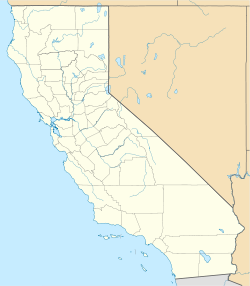San Francisco Armory
| San Francisco Armory | |
|---|---|
| 1800 Mission Street, San Francisco, 94103 | |

A view of the San Francisco Armory at the corner of Mission Street and 14th Streets
|
|
| Coordinates | 37°46′04″N 122°25′14″W / 37.767778°N 122.420556°W |
| Type | Armory, Arsenal |
| Site information | |
| Owner | Kink.com |
| Condition | Refurbished (2007) |
| Site history | |
| Built | 1912–1914 |
| In use | 1914–1976 |
| Materials | Concrete, brick facade |
| Battles/wars | |
|
San Francisco Armory
|
|
| Area | 2.2 acres (0.89 ha) |
| Built | 1913 |
| Architectural style | Moorish Revival |
| NRHP Reference # | 78000758 |
| SFDL # | 108 |
| Significant dates | |
| Added to NRHP | November 14, 1978 |
| Designated SFDL | 1980 |
| Garrison information | |
| Garrison | United States National Guard |
The San Francisco Armory, also known as the San Francisco National Guard Armory and Arsenal or simply The Armory, is a historic building in the Mission District of San Francisco, California.
The building was constructed as an armory and arsenal for the United States National Guard in 1912–1914 and designed with a castle-like appearance in a Moorish Revival style. The Armory was built on part of the site of Woodward's Gardens (1866–1891), a zoo, aquarium, art museum, and amusement park which covered two city blocks, bounded by Mission, Valencia, 13th, and 15th Streets. The structure was built as a replacement for the old San Francisco Armory in the Western Addition, which had been destroyed by the 1906 earthquake. In addition to its role as an armory and arsenal, during the 1920s, it served as a venue for sporting events, such as prizefights.
The Armory served as a stronghold and rallying point for the National Guard in their suppression of the 1934 San Francisco General Strike (an event known as "Bloody Thursday"). The building closed as an armory in 1976, when the National Guard moved its facilities to Fort Funston.
From the 1920s through the 1940s, the Mission Armory served as San Francisco's primary sports venue, eventually earning the nickname "the Madison Square Garden of the West." For almost three decades, at least two prizefights were held in the Drill Court each week.
...
Wikipedia



